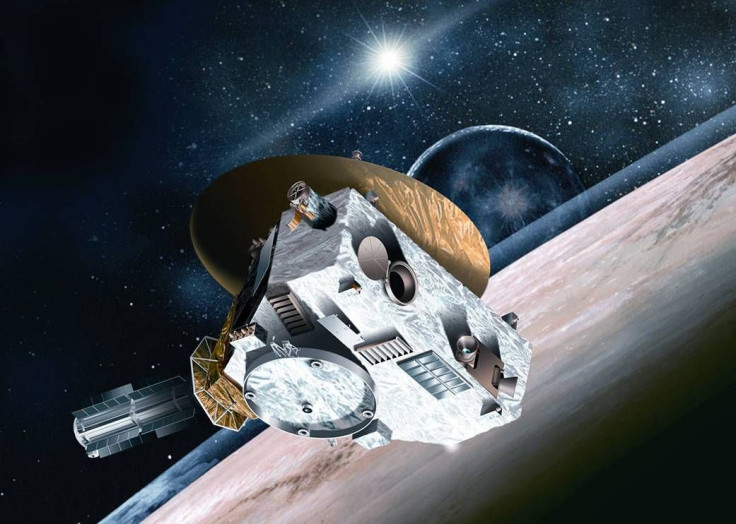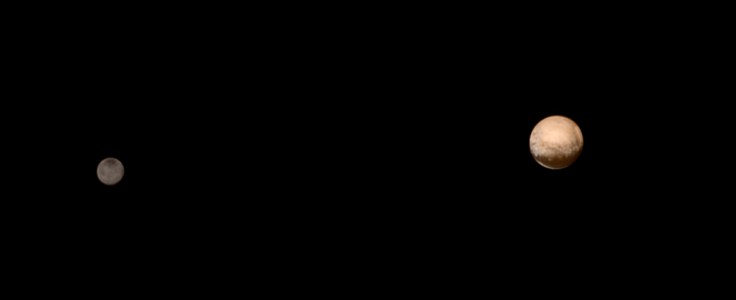Pluto And Charon, Captured Together By New Horizons, Seem More Like Strangers

As NASA’s New Horizons spacecraft closes in on Pluto, fresh details are emerging about the dwarf planet and its neighborhood. Added to the list is a new photo -- snapped by New Horizons on Wednesday -- which shows Pluto and its mysterious moon Charon together.
Although both icy worlds are believed to have been shaped by the same cosmic collision billions of years ago, they have unique characteristics that make them appear more like strangers than siblings, astronomers say. New Horizons captured the latest photo when it was about 3.7 million miles from Pluto and Charon.
“These two objects have been together for billions of years, in the same orbit, but they are totally different,” Alan Stern of the Southwest Research Institute (SwRI) in Boulder, Colorado, said in a statement.
While Pluto’s surface is covered with bright and dark features, Charon is mostly covered with a uniform light-gray terrain with only a single dark region at one of its poles. The image also shows reddish materials that color Pluto, but not on Charon.

Astronomers also found evidence of frozen nitrogen, methane and carbon monoxide on Pluto, while Charon’s surface is mainly made of frozen water and ammonia compounds. In addition, Pluto’s interior is mostly made of rock, while that of Charon contains both rock and water ice.
According to astronomers, Charon is about 750 miles across -- nearly half the diameter of Pluto -- making it the solar system’s largest moon relative to its planet. Scientists also believe that newly detected brighter areas on Charon’s surface could be impact craters.
“If we see impact craters on Charon, it will help us see what’s hidden beneath the surface,” Jeff Moore of NASA’s Ames Research Center said in the statement. “Large craters can excavate material from several miles down and reveal the composition of the interior.”
On July 14, New Horizons will zip past Pluto at 30,800 miles per hour, as part of the initial reconnaissance of the solar system with the first-ever look at the distant icy world. However, observations of Pluto will not end after New Horizons flies past the dwarf planet. On July 23, the Spitzer Space Telescope will begin a seven-day series of observations to gather data that will reveal possible changes in ice on Pluto's surface.
“Spitzer is around 4.87 billion km (around 3 billion miles) from Pluto,” Noemi Pinella-Alonso from the University of Tennessee in Knoxville, and lead investigator of the Spitzer observations, said in a statement. “The spacecraft provides an effective tool to study the ice on the surface and search for other materials that have not yet been identified.”
© Copyright IBTimes 2024. All rights reserved.












